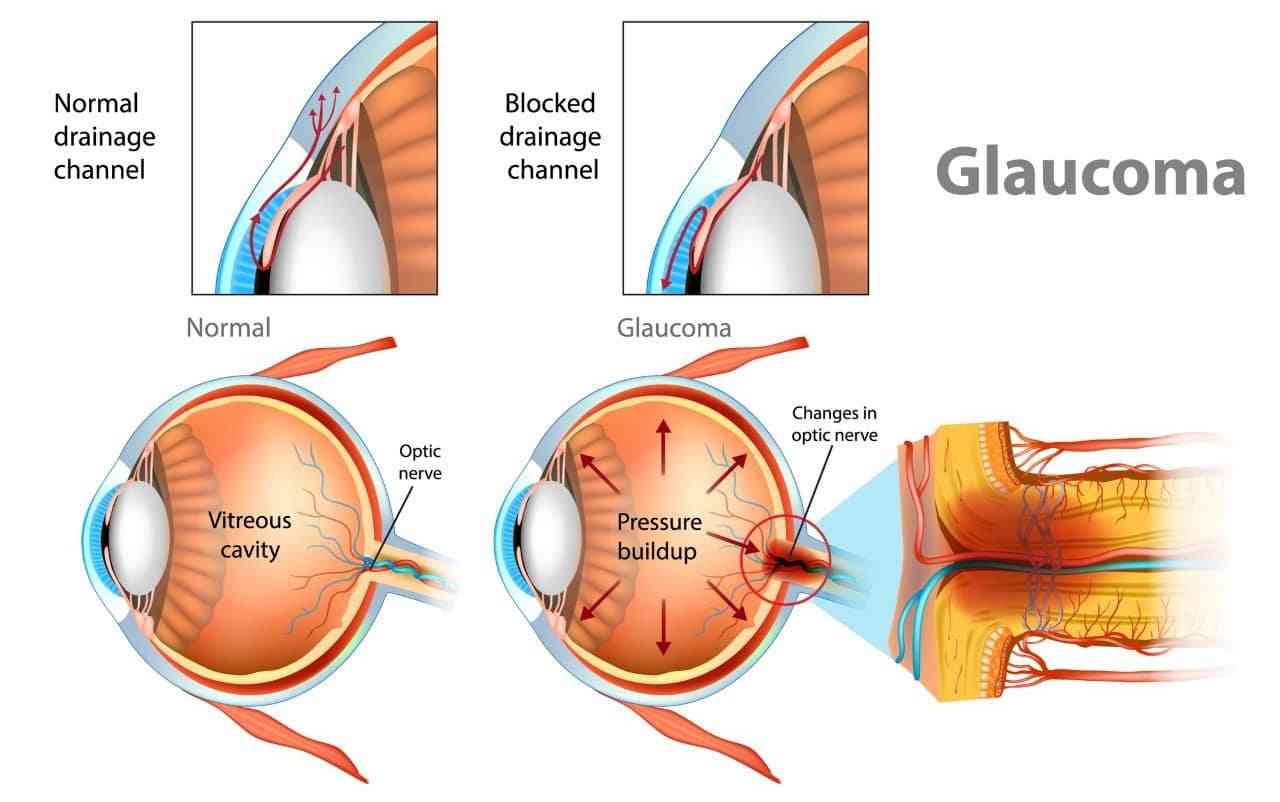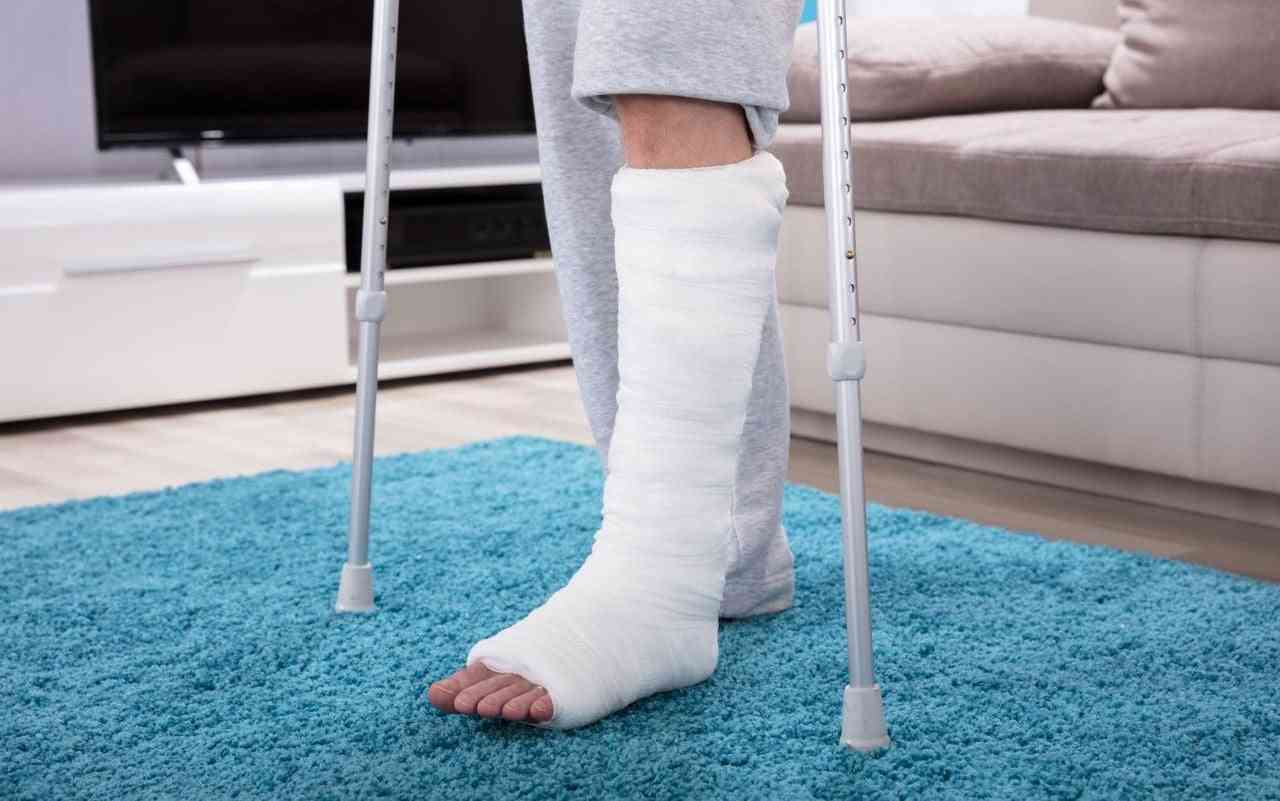
What Is Glaucoma?
Glaucoma is a progressive eye condition where the optic nerve (the nerve behind the eye) is damaged, leading to vision loss.
More and more people are diagnosed with glaucoma yearly, especially the elderly. According to the CDC, more than 3 million people in the United States have glaucoma.
It is important to understand this condition to better take care of yourself or loved ones who are living with it.
What Causes Glaucoma?
Glaucoma occurs when there is too much fluid in the eye which increases the eye pressure.
The fluid in question is called the aqueous humor. Aqueous humor is important in maintaining the shape of the eye. It is also useful in immunity and the transport of nutrients within the eye.
In normal circumstances, the aqueous humor is produced and drained from the eyes at a balanced rate. However, in glaucoma, the aqueous humor is not well drained, causing a build-up of fluid within the eye.
This build-up leads to an increase in eye pressure, otherwise called intraocular pressure (IOP). Increased intraocular pressure leads to progressive damage to the optic nerve, which can span from months to years.
During this time, vision begins to deteriorate, and if not treated, blindness will eventually set in.
Symptoms of Glaucoma
Glaucoma manifests differently in people, with some having no symptoms, and others experiencing severe symptoms.
Symptoms of glaucoma include:
1. Regular headaches
Headache is a sign that there is something wrong with the body. It is not to be taken lightly, especially if headaches occur regularly.
In glaucoma, regular headache is a common symptom.
2. Eye pain and redness
Pain felt in the eye should never be overlooked.
In glaucoma, the increased intraocular pressure can lead to severe pain or discomfort and redness of the eye.
3. Blurring of vision
Continuous injury to the optic nerve will eventually lead to formation of blind spots and blurring vision.
Some people with glaucoma may see a ring of colors around a light source, e.g. a light bulb or flashlight.
4. Nausea and/or vomiting
Nausea and vomiting may occur following an episode of severe eye pain or headache.
5. Blindness
Here, there is a sudden loss of vision. It occurs in the end-stage of glaucoma where the damage is complete.
Types of Glaucoma
Glaucoma is classified into different types, some of which include:
Open Angle Glaucoma
In open-angle glaucoma, the aqueous humor drainage pathway of the eye is gradually blocked. This leads to a gradual increase in intraocular pressure.
Here, patients are mostly asymptomatic or develop symptoms slowly. For some people, it manifests as sudden blindness, which makes open-angle glaucoma a “silent thief of sight.”
It is usually diagnosed on routine eye examinations.
Closed Angle Glaucoma
In closed-angle glaucoma, there is a sudden or abrupt block in the aqueous humor drainage pathway of the eye. This leads to a prompt increase in intraocular pressure.
It manifests as an attack due to the abrupt nature of its onset. This attack may be preceded by mild symptoms such as blurred vision, mild headache, etc.
It is easier to spot compared to open-angle glaucoma.
Normal Tension Glaucoma
This type of glaucoma is tricky as its disease process is not well understood.
In normal-tension glaucoma, the intraocular pressure is normal. However, there is glaucoma present and it will still lead to symptoms.
Can Glaucoma Be Cured?
No, glaucoma cannot be cured. However, glaucoma can be managed in a manner that prevents further damage to the optic nerve.
How Is Glaucoma Managed?
Glaucoma can be managed effectively by the following:
Medications
Daily medications in the form of eye drops are given to regulate intraocular pressure.
These drugs may include:
- Beta blockers e.g. Timolol.
- Prostaglandin analogs e.g. Latanoprost, Travopost.
- Alpha agonists e.g. Brimonidine.
These medications work to either reduce the production of aqueous humor or increase humor drainage.
Medications are effective in managing glaucoma, and preventing further damage to the eye.
Surgery
Surgical procedures that may be done to lower intraocular pressure include:
- Laser Treatment
- Eye Surgery
These procedures are aimed at freeing up the clogged drainage and reducing the production of aqueous humor (laser treatment).
How to Live with Glaucoma
Glaucoma, as scary as it sounds, can be overcome. Glaucoma doesn't have to stop you from carrying out your daily activities.
Learning to live and deal with glaucoma is important as it will lead to the best outcome and improved quality of life.
Practical steps you should take to live with glaucoma include:
1. Stick to your medication schedule
As a person living with glaucoma, you will most likely be placed on eye drops which are to be taken every day.
Do not fail to take them, as they are very important in preventing any permanent damage from the condition.
Also, while on the medication, you won't experience symptoms of glaucoma. This means you can go on with your day without worrying about headaches, eye pain, and blurry vision.
2. Set reminders to take your eye drops
Taking medications every day can be tiring and easy to forget.
You can set a phone alarm or reminder to take your eye drops. This way, there is a lesser chance of forgetting to take them.
3. Make sure to apply the eye drops properly
To properly administer eye drops, these steps should be followed:
- Lean your head backward with your eyes looking up.
- Use one hand to pull your lower eyelid down, and the other hand to hold the eye drop upside down.
- Gently squeeze the eye drop to release the prescribed drops into your eye.
- Once the drug is dropped, close the eye and lightly press a finger on your tear duct for a minute.
- Avoid touching the tip of the eye drop to prevent contamination.
When eye drops are not properly administered, the medications needed are not taken and the disease is not properly managed.
4. Go for regular eye check-ups
Glaucoma is best monitored from time to time to see how well you are responding to medication. Be sure to see your ophthalmologist regularly. If improvements are not satisfactory, your doctor may suggest a change of medications or a new line of treatment.
How to Prevent Glaucoma
Glaucoma cannot be prevented. However, vision loss can be avoided.
Prevention of vision loss is by first identifying your risk of developing glaucoma.
People at risk for glaucoma include those with the following:
- Family history of glaucoma.
- Increased intraocular pressure.
- African, Asian, or Hispanic descent.
- Previous eye trauma or injury.
- Aged 40 and above.
- Refractive errors (e.g. myopia).
- Use of certain drugs (e.g. long-term steroid use).
- Chronic diseases like diabetes, hypertension, etc.
If you fall within the risk categories, regular eye checks should be carried out. This is to enable early detection and management of glaucoma.
The Bottom Line
Glaucoma is a preventable cause of blindness. Preventable, meaning that blindness does not have to occur.
Early detection and proper management are key to living a full and normal life with adequate vision.
Image by Sakurra via Deposit Photos








